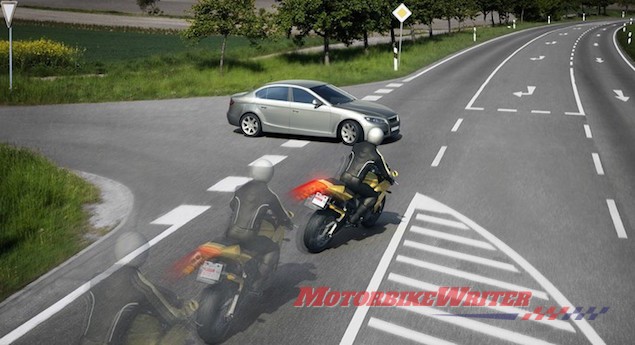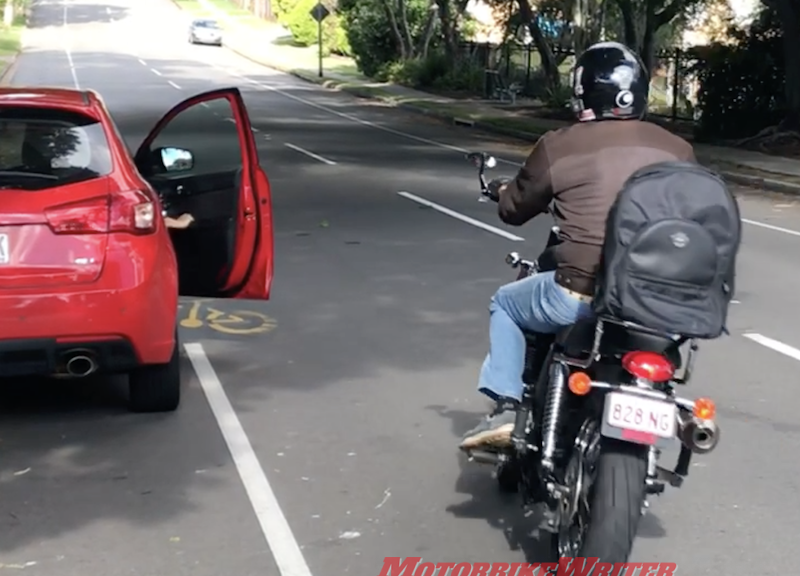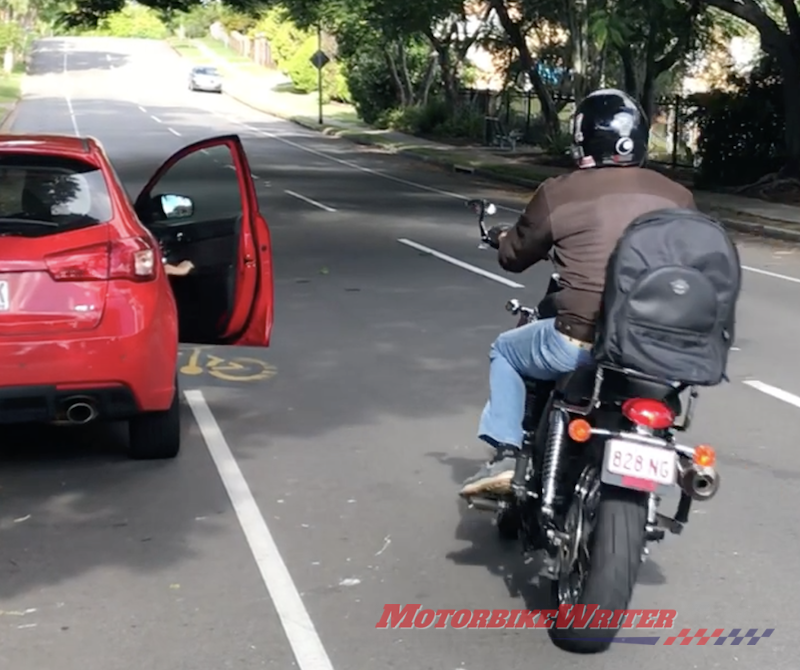
A new theory about what causes Sorry Mate I Didn’t See You (or SMIDSY) crashes is that bikes can appear out of nowhere like planes and ships.
Rider safety exert Kevin Williams of British rider training company Survival Skills calls the phenomenon the “constant bearing, decreasing range” issue.
I have reported for several years on various theories that can lead to SMIDSY crashes.
You can check out some of the scientific studies into SMIDSY by clicking here.
The causes can be anything from drivers not bothering to look, seeing us but not caring because of the diminished threat, not seeing us because of “saccadic masking” (see video below), and plain stupidity.
If you want to know how to avoid these crashes, click here.
One of the suggestions we make is to weave around in your lane to attract the attention of other motorists.
Kevin agrees that this is important because a static rider is a small target that is difficult to see and whose speed is difficult to judge.
He says it’s like an approaching plane or ship on a constant bearing.
“The problem is that lack of lateral movement to attract our attention, and there’s a very specific form of motion camouflage that happens when two moving vehicles are on a collision course,” he says.
He says the problem is known as the ‘Constant Bearing, Decreasing Range’ issue which is a term used in navigation and flying.
It means that some object, usually another ship viewed from the deck or bridge of one’s own ship or another aircraft viewed from the cockpit, is getting closer but staying at the same angle – or maintaining the same absolute bearing.
“If they both continue on the same course at the same speed, they WILL collide. And it CAN happen on the roads,” he says.
“Just ask yourself where; for example, when you’re approaching a roundabout and another vehicle is on an intersecting course and will arrive at the same time, or when approaching a cross-roads and another vehicle is approaching head-on.
“Since neither vehicle will appear to move relative to the background, it can be difficult for either driver/rider to perceive the other, even when in clear view.”
He says riders cannot rely on drivers predicting that there might be a bike they can’t see, so it is up to riders to attract the motorist’s attention by breaking the Constant Bearing problem.
“All we need to do is change position and speed and thus create some lateral movement,” he says.
“Hopefully the driver will now see us though a wise rider would still be prepared to take evasive action,” he says.
Riders should also identify anything that may block them from a motorist’s vision and move out from behind it so they can be seen;.
“That way we ‘uncloak’ our bike, and at least give the driver a chance of seeing us.”
It still doesn’t mean they won’t perceive a bike as a threat nor that they will misjudge our speed, so take care out there.
Source: MotorbikeWriter.com

























